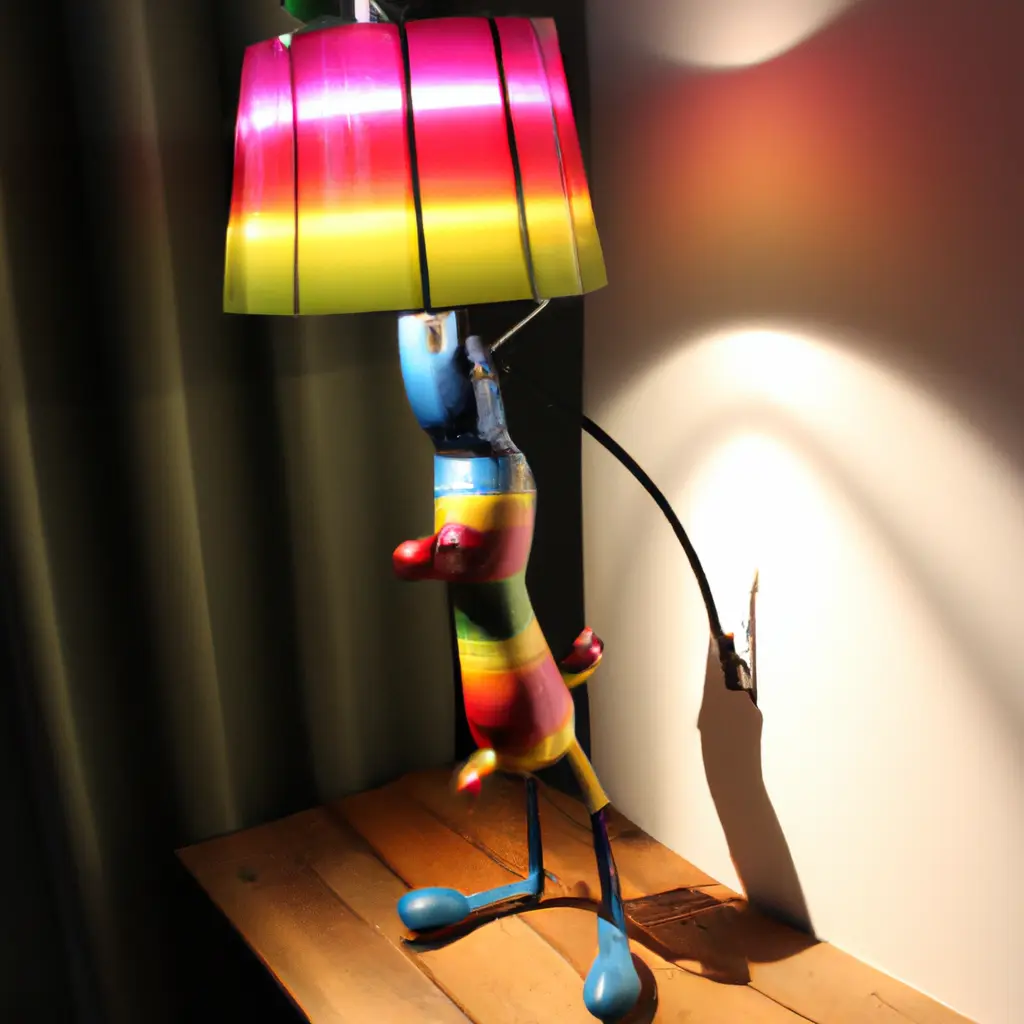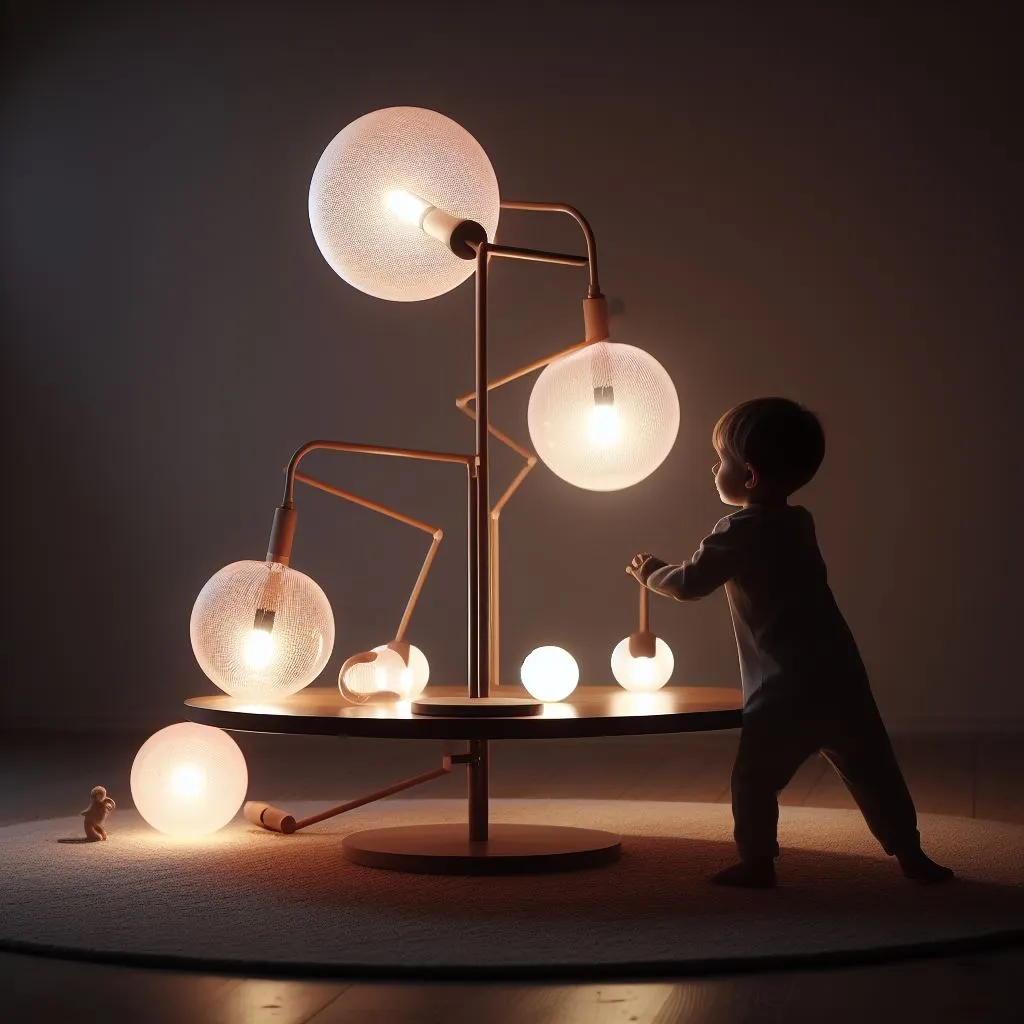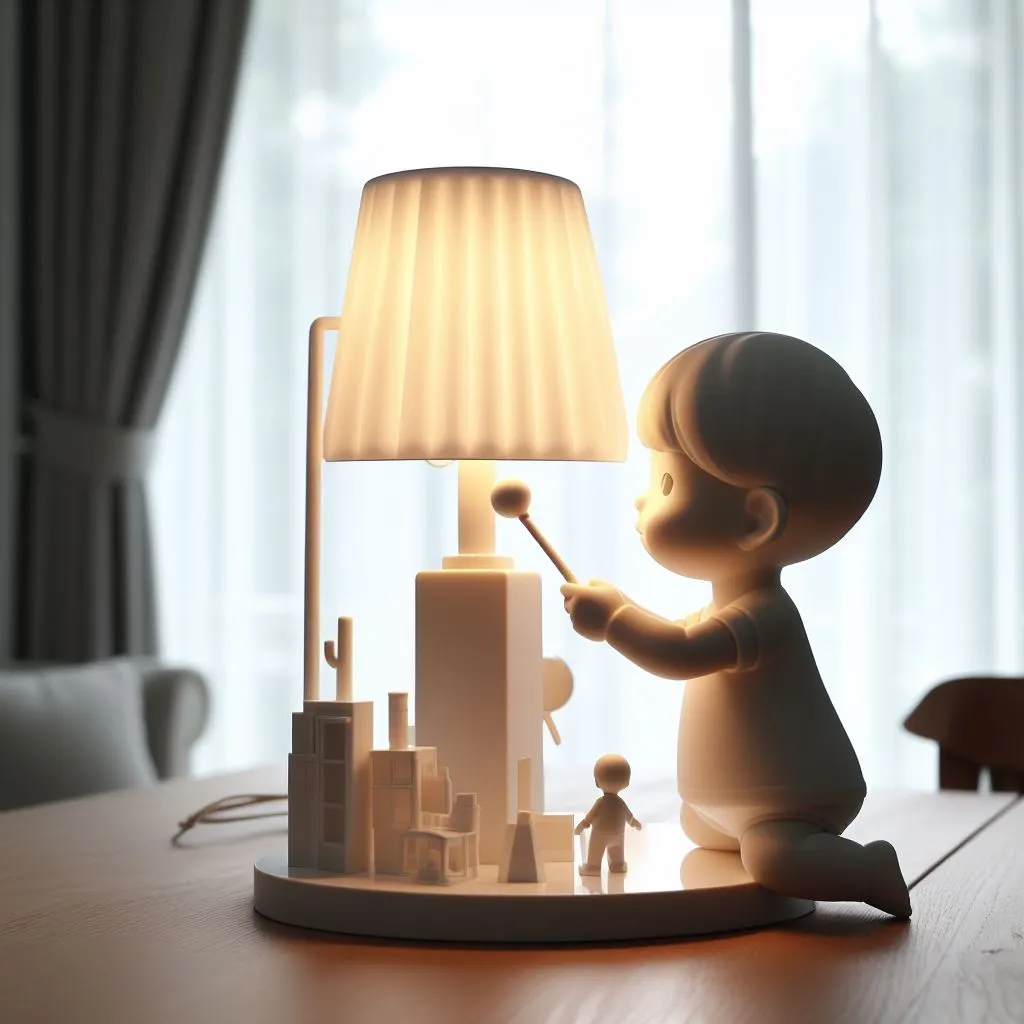Keeping Floor Lamps Safe Around Children
When it comes to protecting your kids, there are few places that you can overlook. One of the most critical considerations is creating a safe environment around potential hazards, such as floor lamps.
It is essential to be aware of the safety concerns regarding these lamps to make an informed decision when choosing one. Below, we outline many safety points to consider when selecting a floor lamp and provide practical advice for keeping children safe when around them.
General Safety Tips for Floor Lamps Around Children
When young children are present, taking extra safety precautions when using floor lamps is essential. A few simple steps can help ensure your children are kept safe from potential hazards.
- Secure your floor lamp: If you have small children around, ensure it is secured by anchoring it with furniture or screws to avoid the risk of tipping.
- Keep cords out of reach: Place cords in areas that are hard for your child to reach and consider running them through cord covers or cord winders to make them less accessible.
- Know your bulbs: When choosing a bulb, check the wattage of the lighting source to determine the safest type for your particular lamp. Only high-wattage bulbs if they are appropriately enclosed to reduce the risk of fires.
- Put lids on bulbs and fixtures: To avoid the risk of electric shock, ensure all lightbulbs and fixtures have covers to protect your children from the potentially dangerous parts.
- Check lamps regularly: From time to time, look at your floor lamps to ensure they are stable and that there are no worn-out parts that could create a hazard.
Following these essential safety tips can help keep your floor lamps safe and secure in the presence of children. If you find that existing lights don’t meet safety requirements, consider replacing them with models designed specifically for use around children.
Choosing a Floor Lamp for Child Safety
When it comes to children, safety is of paramount importance. When choosing a floor lamp to use around your little ones, understanding the risks and taking necessary precautions is critical.
Here are a few things you should consider before selecting a suitable lamp.
Bulb Type and Wattage
Think about the type of bulb you’ll be using in your lamp for both safety and energy-efficiency reasons. Specifically, LED bulbs are safer than halogen, incandescent, and fluorescent since they do not get hot to the touch. Always opt for halogen bulbs with the lowest wattage allowed that will still provide enough illumination. For consistent safety, LED bulbs are the best choice.
Stability & Protection from Tip-Over
Floor lamps can easily be tipped or knocked over, so selecting one that is firmly constructed with a comprehensive, sturdy base is essential.
Look for models equipped with anti-tipping devices, such as a hinge that automatically shuts off the bulb’s power if the lamp tips over.
Security Features
It would help if you also looked for additional child-proofing features like covers for cords and plugs, cord anchors, or caps for lamp switches. If the lamp you’re considering has multiple bulbs, ensure each is safely enclosed with a shade or cage.
Power Source
Finally, it’s essential to be aware of the power source for your floor lamp. Plugging into an outlet equipped with a ground fault circuit interrupter (GFCI) is recommended to reduce the risk of electric shock. Alternatively, you can choose a battery-powered or USB-powered lamp for added peace of mind.
By taking the time to consider these factors before selecting a floor lamp for your home, you’ll be sure to find a safe option that meets your family’s lighting needs.
Understanding Lamp Type Safety Concerns
When deciding what kind of floor lamp is best for a home with children, it’s essential to be aware of the safety advantages and disadvantages of different types of lights.
Halogen lamps give off bright, white light and energy-efficient bulbs. However, halogen lamps operate at high temperatures, which can be a safety hazard if touched.
Halogen lamps may also need to be placed further away from items that could be flammable due to the heat produced.
LED (light-emitting diode) lights are energy-efficient and last longer than other bulbs. They produce little to no heat, which makes them an excellent choice for households with children. However, LED lamps may be more expensive than other lighting options.
Incandescent bulbs have been around for over a century and provide warm, soft lighting. While this type of bulb generates a little heat, they are less energy efficient than other lighting sources. Incandescent bulbs also contain mercury, which poses a health hazard if broken.
Fluorescent bulbs are very energy efficient and do not produce much heat. They also come in various color temperatures, which can be a great way to control how the light looks in a room.
Unlike incandescent bulbs, fluorescent bulbs do not contain mercury. However, flickering from these types of bulbs can cause headaches and eyestrain.
When deciding on a floor lamp for a home with small children, it is crucial to consider the safety advantages and disadvantages of different types of lighting. Choosing an energy-efficient bulb that does not generate much heat is ideal for households with young children.
Secure Installations & Security Considerations
Installing a floor lamp properly ensures it stays safe for children. Before you decide where to place your floor lamp, take the time to consider a few essential points.
- Make sure the power source is out of reach. Place the lamp in an area that isn’t easily accessible to young children. Any exposed cords or outlets within reach should be covered.
- Choose a spot that provides adequate support. Floor lamps must be placed on a sturdy and level surface to avoid risks of tipping or falling.
- Be mindful of temperature. Ensure the lamp does not come into contact with combustible materials such as furniture, drapes, clothing, and curtains.
Sometimes, a clamp or other secure installation method may be necessary. Use proper safety clips to ensure the lamp can’t be tipped or pulled over.
Additionally, regarding security considerations, ensure the floor lamp is bolted down or otherwise secured. Please do not leave an unsecured, loose, or unstable floor lamp to prevent it from being moved or knocked over.
Electric Shock Countermeasures
Electric shocks are dangerous and life-threatening, especially for children. To ensure the safety of your children, it’s essential to take measures to prevent electric shocks. Here are some steps you can take:
- Secure power strips: Power strips can be a source of electric shock if not correctly secured. Make sure power strips are hidden away from kids and not easily accessible.
- Cover exposed cords: Exposed cords are a significant source of electric shock. Use cord covers or tape any exposed parts.
- Check electrical grounding: Look out for damaged plugs and sockets that may be improperly wired. Replace them or hire a qualified electrician to do the job.
- Replace outdated wiring: If you have any obsolete wiring in your home, replace it with modern insulation and outlets as soon as possible.
- Install GFCI outlets: Ground Fault Circuit Interrupter (GFCI) outlets are designed to protect against electrical shocks by cutting off power when an overload or short circuit is detected.
Following these tips can help protect your children from electric shocks when using a floor lamp.
Regarding floor lamps and child safety, checking for issues is as important as keeping them secure. There are a few key things to watch out for that will help you identify any potential problems with your lamp.
The first warning sign of danger is often visible damage. If you see any signs of wear and tear, such as cracks, fraying cords, loose or missing parts, discoloration, or heat damage, it’s time for the lamp to go.
It’s also important to check the stability of the lamp. Be sure the base is secure and the light won’t tip easily if bumped. It would help if you also inspected the lamp periodically to ensure it’s firmly mounted and not wobbling.
Finally, be on the lookout for worn-out parts. Pay attention to the switch, socket covers, and plugs. Replace any parts that look worn, cracked, or damaged. It’s also a good idea to replace the bulb at least once a year to ensure it’s functioning correctly.
By taking these simple steps, you can be sure that your floor lamp is safe for children and that you can use it with peace of mind.
Additional Lighting Considerations
When considering other lighting sources, such as LED Strip Lights and Torchiere Lights, it’s essential to be mindful of safety. It’s best to keep all light fixtures away from easily accessible areas of the house, preferably high on the wall or on a table where children can’t reach them. Secure floor lamps to avoid tipping or tripping hazards if you’re using them.
When dealing with cords, ensure all cables are tucked away, out of reach of kids. Removable covers can be placed around the lines to protect kids from getting tangled in the wires. Also, label the plugs to identify the switches and controls.
If you’re using halogen bulbs, they get very hot, so keep them away from flammable materials. LED or fluorescent bulbs should be used instead.
- Keep all light fixtures away from easily accessible areas
- Secure floor lamps to avoid tipping or tripping hazards
- Tuck away cords and use removable cord covers
- Label the plugs to identify switches and controls
- Avoid halogen bulbs due to heat
These are just a few simple considerations to help ensure a safe environment when dealing with other lighting sources.
Questions to Ask Before Choosing a Floor Lamp
When it comes to your child’s safety, you should not take any chances. That’s why it is essential to ask the right questions when choosing a floor lamp for your home. Consider inquiring the following about the light:
- What type of bulb does the lamp use? Make sure that the bulb wattage is within the safety requirements.
- Does the lamp have any exposed wiring that could harm kids?
- Are the sockets adequately protected from shock hazards? This can be done by packing them with GFCI or Ground Fault Circuit Interrupters.
- Is the cord long enough to reach power sources without dangerous extension cords?
- What type of protective guards or shades are included with the lamp? Are they easy for kids to remove?
- Does the lamp come with easily accessible safety warnings?
- Are the base and switch of the lamp secure enough to prevent accidental tipping or electrical shocks?
Asking these questions can help you choose a safe and secure floor lamp for your home. There are several other considerations when selecting the perfect light for your home. Be sure to read the rest of this guide for more information.
Conclusion
Safety should be your top priority when purchasing a floor lamp for your home. It’s essential to consider the types of lights available and understand their safety advantages/disadvantages for children.
Furthermore, consult the necessary installation instructions and secure any power strips or cords that may be around. Lastly, always closely inspect lamps for any potential damages, tripping hazards, or worn-out parts prior to use.
It is essential to prioritize child safety when choosing a floor lamp. Arm yourself with knowledge about the different types of lights available and their potential hazards. Following these tips can help ensure the floor lamp you choose is safe for those around it.
Glossary of Terms
To properly understand floor lamp safety, it is essential to have a basic understanding of specific terms related to floor lamps. Here are some definitions of standard terms used when discussing floor lamps:
- Bulb wattage refers to the energy or power consumed by a light bulb. The higher the wattage, the brighter the morning, and the more point is used.
- GFCI (Ground Fault Circuit Interrupter): This electrical safety device helps prevent electric shocks. It works by sensing slight electrical current imbalances and automatically shutting off the power to protect it from harm.
It is essential to understand these basic terms when discussing floor lamp safety and security.
Sources
Throughout this guide, various resources have been used to ensure the accuracy of the content provided. Here are those sources:
- US Consumer Product Safety Commission. “CPSC Safety Tip: Choose and Use Floor Lamps Safely.” 2017.
- Holmes, Mollie. “How to Securely Install a Floor Lamp.” 2018.
- Law, Kate, et al. “How to Choose a Floor Lamp.” 2020.
- Lighting Research Center. “Lamp Types: Incandescent, Halogen, CFLs, LEDs, HID.” 2017.
- Truitt, Matt. “8 Tips for Choosing the Right Lamp.” 2018.
FAQs
Are Floor Lamps Safe for Children?
Yes, floor lamps are generally safe when used appropriately in homes with young children, but it is essential to take extra precautions and be aware of potential dangers.
How can I secure my floor lamp to make it safer for young children?
Secure a floor lamp by ensuring the lamp is stable and does not wobble and that cords and plugs are well out of reach of small children. As an extra precaution, covers can be fitted around cords, cables, and lightbulbs.
What should I consider when purchasing a floor lamp for a home with young children?
When purchasing a floor lamp, consider factors such as the type of lamp, the wattage of lightbulbs it can handle, and any unique installations or security measures that may be necessary.
What are the advantages/disadvantages of different types of floor lamps regarding child safety?
Halogen lamps offer the brightest lighting but produce more heat and use more energy, making them a fire hazard. LED lamps are energy efficient but may have flicker issues.
Incandescent lamps offer quaint, gentle lighting without flickering and generally perform the best in energy efficiency but may consume more energy than other LED and fluorescent lamps. Fluorescent lamps are energy efficient, but they flicker, vibrate, and contain traces of mercury.
What steps can I take to ensure no electric shocks occur from my floor lamp?
To ensure no electric shocks occur, ensure power strips and cords are always switched off when not in use and secure covering to prevent young children from accessing them. In addition, check for signs of damage on your floor lamp regularly, such as frayed wires and scorched power outlets.
Should I consider other lighting sources in a home with young children?
LED Strip Lights and Torchiere Lights are other lighting sources for a home with young children. LED Strip Lights are energy efficient and offer more control over your lighting environment. Torchiere Lights are the safest option for use with children due to their sealed designs.
What additional best practices should I consider while using floor lamps around young children?
Children should always be supervised when near a floor lamp, and it is essential to ensure the lamp is placed out of reach to avoid accidental knocking over. Additionally, regularly replace worn-out parts such as lightbulbs and plug covers to minimize the chances of electric shocks.




1 thought on “Are Floor Lamps Safe for Children? Complete Guide”